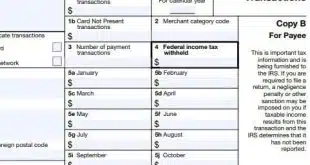As the Oct. 1 EMV liability-shift date nears, and consumers begin receiving even more credit and debit cards bearing EMV chips, educating them and merchants on how the cards are used takes on even greater importance.
Just last week, Target Corp. introduced a video and a series of questions-and-answers explaining what the migration to chip in its branded RedCards will mean for consumers, and how to use the new cards. It also explains that it will accept chip cards from other issuers, and that it will continue to accept magnetic-stripe cards.
And earlier this year JPMorgan & Chase Co. launched a consumer chip-education program.
Such programs will be essential given the multitude of chip cards, authentication options, and acceptance locations in the United States, says Steve Pedersen, vice president and head of North American corporate card products at BMO Financial Group, a Toronto-based banking giant that operates BMO Harris in the Midwest, and acquirer Moneris Solutions Corp. in a joint venture with the Royal Bank of Canada.
“It’s more of a challenge in the United States,” Pedersen tells Digital Transactions News. “It is a more fragmented market with so many players.” The lack of consistency, especially for cardholder-verification methods—chip and PIN and chip and signature—may make it more confusing for consumers, he says.
Consumers will need education about how to use their cards and stores will need to train employees, assuming merchants have installed EMV-accepting point-of-sale terminals, Pedersen says.
Though Canada’s payment card industry is much more uniform than in the United States—PINs are preferred among major Canadian banks, which all issued chip cards at about the same time—there was still an issue with merchant acceptance, Pedersen says.
“In Canada, all of the banks had their cards out no problem,” he says. “But the retail community really didn’t make the investment in terminalization.” Canada’s liability shift went into effect in 2010, prompting retailers to install EMV-capable terminals, he says.
Following the Oct. 1 liability shift in the United States—that’s the date the party to a general-purpose credit or debit card transaction that doesn’t support EMV chip cards, be it the issuer or merchant, will bear liability for any resulting counterfeit fraud—Pedersen suspects merchant adoption of EMV terminals will accelerate as many may face new fraudulent charges.
“The big driver will be the liability shift,” he says. “That’s the first time the retail community has some important skin in the game, relative to a loss that occurs on the chip card. That will be a big stimulus for terminalization.”
As for educating merchants, much of that falls on acquirers, Pedersen says. “When you think about the sheer number of POS machines in the United States, it’s not an inconsequential task,” he says. Estimates peg the number of U.S. POS terminals at more than 8 million devices.
As U.S. consumers begin to make more EMV transactions in the fourth quarter, acquirers will be ready because they’ve had to prepare in advance, and most already had international EMV-acceptance operations, Pedersen says. “There’s been such a preparation in the U.S., there’s a greater ability to deal with the inevitable tsunami (of transactions).”




